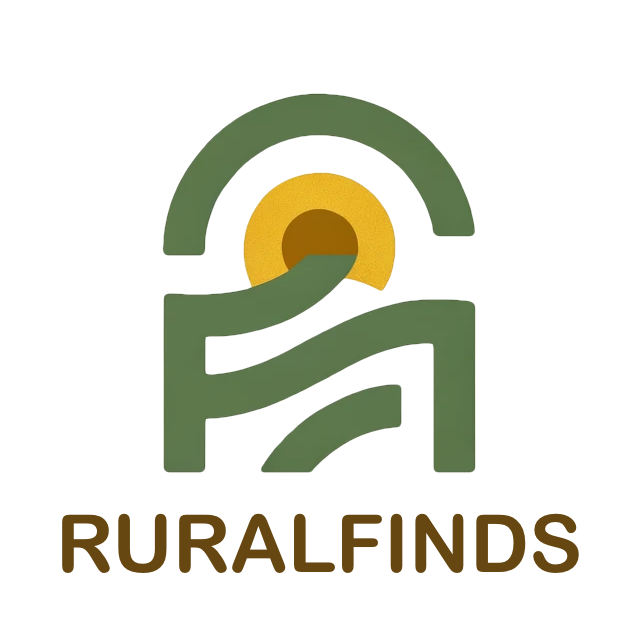Agricultural Tax Exemptions: Maximizing Rural Property Benefits in the UK
Starting April 6, 2026, the UK government will fundamentally reshape agricultural tax relief by capping Agricultural Property Relief (APR) and Business Property Relief (BPR) at a combined £1 million for full inheritance tax exemption. Properties valued above this threshold will receive only 50% relief, creating an effective 20% tax rate on agricultural estates that previously paid nothing.
This reform targets the concentration of relief among the largest estates, where just 117 claims currently account for 40% of the £550 million annual cost. A £3 million farm that today passes tax-free between generations could face over £400,000 in inheritance tax under the new rules—potentially forcing land sales that break up centuries-old family operations.
The changes arrive amid broader fiscal pressures and debates about agricultural subsidies post-Brexit. While the government maintains these measures will affect only the wealthiest 27% of estates claiming relief, farming organizations warn of devastating impacts on food security and rural communities. The reality lies somewhere between these positions, with outcomes heavily dependent on how effectively landowners adapt their tax planning strategies before the deadline.
How Agricultural Property Relief Works Today and Tomorrow
Agricultural Property Relief has protected family farms from inheritance tax since 1975, recognizing that forcing land sales to pay death duties would damage food production and rural economies. The relief covers farmland, buildings essential to agricultural operations, and farmhouses occupied for farming purposes—but only at their “agricultural value,” typically 20-30% below open market prices where development potential exists.
The current system provides 100% relief on qualifying agricultural property, regardless of estate size. This unlimited relief disappears in April 2026, replaced by the £1 million cap per person. Importantly, unused allowances cannot transfer between spouses, making ownership structure critical. A married couple could theoretically shelter £2 million through their combined allowances, plus standard nil-rate bands worth £650,000 per person, protecting estates up to £3.3 million—but only with proper planning.
The definition of “agricultural property” remains unchanged, covering land occupied for agricultural purposes including grazing, crops, and intensive production. From April 2025, land under environmental management agreements will also qualify, removing a barrier that previously discouraged farmers from participating in conservation schemes. Farmhouses must still meet the “character appropriate” test, which examines whether the property’s size and nature align with the farming operation’s requirements.
Business Property Relief Fills Critical Gaps
While APR covers land and buildings, Business Property Relief protects the working capital of farming operations—machinery, livestock, growing crops, and business assets that don’t qualify as agricultural property. BPR currently provides 100% relief for unquoted trading company shares and sole trader assets, dropping to 50% for assets in investment companies or quoted shares.
The same £1 million combined cap will apply to BPR from April 2026, forcing difficult choices about which assets to protect. The relief requires businesses to be “wholly or mainly” trading rather than investment-focused, meaning over 50% of activities must involve active trading. For diversified estates mixing farming with property rental or renewable energy, maintaining trading status becomes crucial.
The interaction between APR and BPR creates planning opportunities. Where agricultural land has development value exceeding its agricultural worth, APR covers the agricultural value while BPR potentially covers the excess—if the land forms part of a trading business. This sequential application can maximize relief on mixed-use estates, though recent case law like the Balfour decision shows HMRC increasingly challenges aggressive interpretations.
Capital Gains Tax Strategies Beyond Inheritance
The October 2024 Budget increased capital gains tax rates to 18% for basic rate taxpayers and 24% for higher earners, up from 10% and 20% respectively. Yet agricultural businesses retain access to valuable CGT reliefs that can defer or eliminate tax on asset disposals.
Holdover relief allows farmers to transfer agricultural property to the next generation without triggering immediate CGT liability. The recipient inherits the donor’s original purchase price as their base cost, deferring tax until eventual sale. Combined with the seven-year potentially exempt transfer rule for inheritance tax, this enables tax-free succession if carefully timed. Properties must qualify for APR to access holdover relief, linking the two relief systems.
Rollover relief provides another deferral mechanism when farmers sell land or buildings and reinvest proceeds in qualifying business assets within three years. This facilitates farm consolidation, modernization, and adaptation to changing markets without crystallizing tax liabilities. Business Asset Disposal Relief, though rising to 18% by April 2026, still offers reduced rates on up to £1 million of qualifying gains over a lifetime.
Income Tax Advantages for Variable Farm Profits
Farming faces unique income volatility from weather, disease outbreaks, commodity price swings, and subsidy changes. The UK tax system recognizes this through farmers’ averaging provisions, allowing profits to be averaged over two or five years when certain volatility thresholds are met.
Two-year averaging applies when profits in one year fall below 75% of the other year’s figure, while five-year averaging uses the same test across the period. For a farmer earning £100,000 one year and £20,000 the next, averaging could save thousands by keeping income within lower tax bands rather than pushing the good year into 45% rates.
All farming activities automatically qualify as trades for tax purposes, regardless of profit motive or scale. This ensures access to trading loss reliefs, pension contribution relief based on trading profits, and the Annual Investment Allowance—currently £1 million for machinery and equipment purchases. The distinction matters because investment activities face restricted loss relief and cannot access many business tax advantages.
VAT Simplification Through Agricultural Schemes
Most agricultural products—crops, livestock, animal feed—qualify for zero-rating when supplied for farming use, keeping UK produce competitive without VAT burden. The Agricultural Flat Rate Scheme offers further advantages for smaller operations with farming turnover below £150,000.
Under this scheme, farmers add 4% to sales invoices issued to VAT-registered customers without registering for VAT themselves. No quarterly returns, no input VAT recovery calculations, no partial exemption complications—just a simple percentage addition providing cash flow benefits. Diversification into non-farming activities can complicate matters, potentially triggering standard VAT registration requirements if non-farming turnover exceeds registration thresholds.
The interaction between zero-rating and exemption creates complexity for mixed estates. Farm shops selling own produce maintain zero-rating, but adding bought-in goods or café services introduces standard-rated supplies requiring careful accounting. Solar panel installations and battery storage increasingly feature in diversification plans, each bringing distinct VAT treatments requiring professional navigation.
Property Tax Exemptions Worth Thousands Annually
Agricultural buildings and land remain completely exempt from business rates when used wholly for agricultural purposes, including livestock buildings, grain stores, and machinery sheds. This exemption saves typical farms thousands annually, with recent rate increases making the relief increasingly valuable. Any non-agricultural use, however minimal, can trigger rates liability for entire buildings.
Small Business Rate Relief provides additional protection for diversified activities, with properties under £12,000 rateable value paying nothing and tapered relief up to £15,000. Rural Rate Relief adds another 50% discount for qualifying businesses in designated rural areas with populations below 3,000. The combination can eliminate rates entirely on farm shops, holiday lets, and other diversification ventures if structured appropriately.
Council tax generally doesn’t apply to agricultural land, though farmhouses and farm cottages face normal residential charges. Agricultural workers’ accommodation can qualify for council tax discounts or exemptions depending on occupation terms and agricultural necessity. The complexity of local taxation requires careful consideration when planning rural development or diversification projects.
Ownership Structures That Multiply Relief Benefits
The new £1 million cap makes ownership structure pivotal to tax efficiency. Simple solutions work best for many families: ensuring both spouses own farm assets equally doubles available relief from £1 million to £2 million. Partnerships provide flexibility for gradual succession, allowing profit shares to shift toward younger generations while older partners retain capital interests and control.
Company structures suit more complex operations, particularly those mixing farming with substantial diversification. Different share classes enable sophisticated planning—alphabet shares allocating income streams, growth shares capturing future value increases, and preference shares providing retirement income. Share valuations typically discount minority holdings by 40-60%, effectively multiplying available relief.
Discretionary trusts established before October 30, 2024, secured their own £1 million allowances, adding to settlors’ personal allowances. While new trusts created after this date share the settlor’s allowance, existing trusts provide powerful succession tools. Trustees can adapt to changing family circumstances—supporting education, excluding spendthrift beneficiaries, or protecting assets from divorce—while maintaining agricultural operations.
Environmental Schemes and Post-Brexit Transitions
The shift from EU Common Agricultural Policy to domestic support fundamentally alters farm economics and tax planning. Basic Payment Scheme payments, declining toward 2028 elimination, are being replaced by Sustainable Farming Incentive (SFI) payments rewarding environmental outcomes rather than land ownership.
These environmental payments generally constitute taxable trading income, maintaining farms’ trading status for tax purposes. Crucially, land under qualifying environmental agreements will receive APR protection from April 2025, removing the historic conflict between conservation and tax relief. Farmers can now pursue rewilding, peatland restoration, or biodiversity improvements without jeopardizing inheritance tax planning.
The transition creates both opportunities and challenges. Reduced direct payments pressure farm profitability, potentially affecting trading status if investment income becomes proportionally dominant. Yet environmental schemes offer stable, long-term income streams that support business viability while delivering public goods. Success requires integrating environmental management into broader business and tax strategies rather than treating it as an isolated income source.
Timing Critical Actions Before April 2026
The window for optimal restructuring narrows daily. Professional advisers report unprecedented demand as farming families scramble to implement changes before new rules bite. Key actions cannot wait, as many strategies require years to mature fully.
Lifetime gifts made now could still achieve unlimited relief if donors survive seven years, though anti-forestalling rules may apply to transfers after October 30, 2024. Will updates ensuring both spouses utilize full allowances take months to implement properly, particularly where ownership restructuring is needed first. Trust establishment, company formations, and partnership restructures each involve complex legal processes requiring professional expertise.
Asset valuations distinguishing agricultural from development value become crucial for larger estates. The “character appropriate” test for farmhouses faces increasing HMRC scrutiny, with professional valuations typically applying 30% discounts to market values. Regular reviews ensure structures remain optimized as businesses evolve and tax rules change.
Professional Guidance Navigates Complexity
The interaction between multiple tax regimes—inheritance, capital gains, income tax, VAT, and local taxes—demands specialist knowledge. Agricultural accountants understand farming operations and tax legislation, while rural chartered surveyors provide robust valuations defending relief claims. Agricultural law firms structure transactions ensuring legal and tax objectives align.
Case studies demonstrate the stakes involved. The NFU calculates a typical 250-acre farm worth £3 million would face £400,000 inheritance tax under new rules—potentially forcing sale of 60 acres to pay the liability. Larger estates face proportionally higher bills, with some calculations suggesting £5 million farms could owe £775,000, threatening business viability.
Yet properly structured operations can still achieve substantial tax savings. The combination of APR, BPR, CGT reliefs, income tax advantages, and VAT schemes creates multiple opportunities for well-advised rural businesses. The key lies in understanding how reliefs interact, which strategies suit specific circumstances, and implementing changes before opportunities disappear. April 2026 may seem distant, but for comprehensive restructuring, time is already running short.

